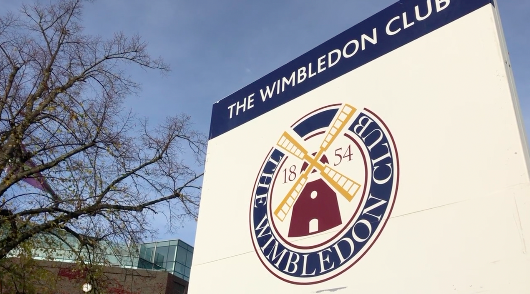Wimbledon Park Project: SW19 residents voice concerns over AELTC plans to develop popular London green space
The All England Lawn Tennis & Croquet Club is eager to expand and secure the Wimbledon Championships as the "pinnacle of tennis"
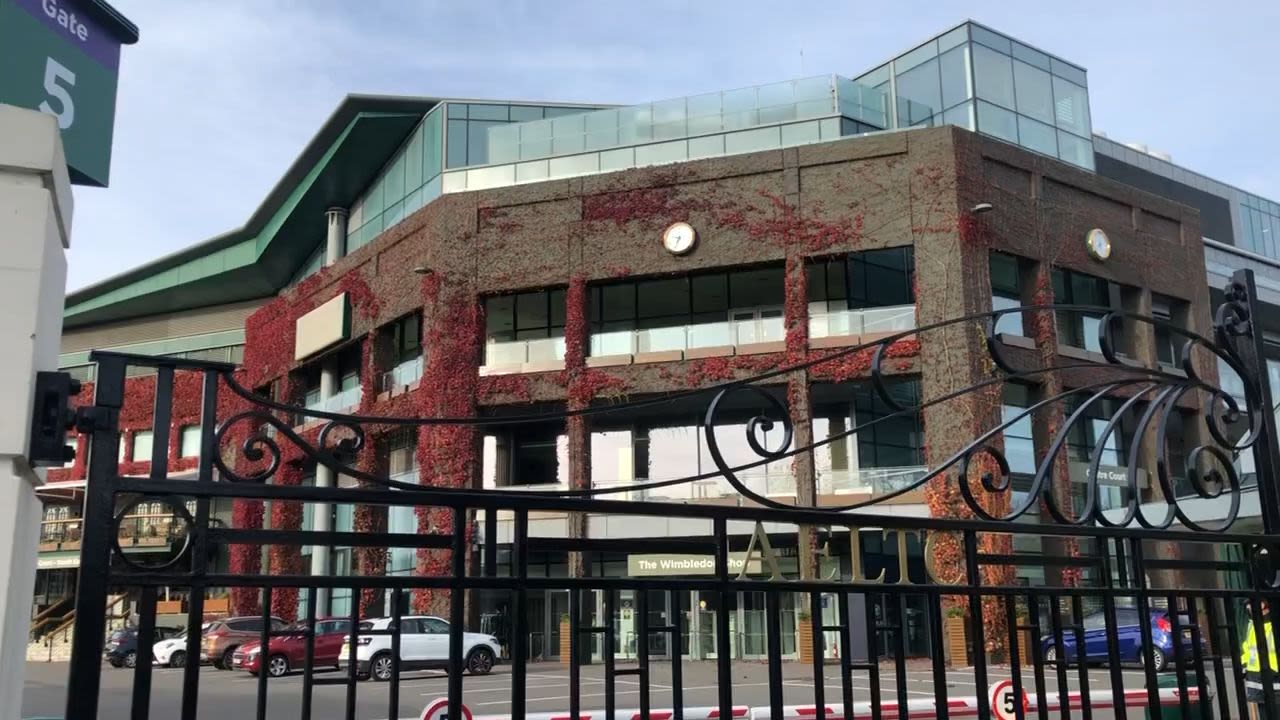
Wimbledon has been home to one of the most recognisable and popular sporting events in the world since 1877.
The All England Lawn Tennis Club (AELTC) plays host to these famous courts that attract around half a million people each year to SW19 over a fortnight.
The club is determined to bring more visitors to the Championships each year and has plans to build 38 new courts on top of a brand new 8,000 capacity show court.
Wimbledon want to be the "pinnacle of tennis" according to AELTC Head of Estate Development, Justin Smith.
Residents in areas including Wimbledon and nearby Southfields have welcomed spectators for several years with open arms, even hosting players in their own homes - but for many of them, this is a step too far.
Background image credit: Unsplash
Societies and Residents Associations in the area have teamed up together to object, claiming they represent over 10,000 households.
This video is set to the background of where the AELTC development is planned and discusses the main concerns that residents have.
One group has been around since 1903 - The Wimbledon Society. They are volunteer-led and aim to preserve and protect the town from urban development.
Chair of the society’s planning and environment committee Chris Goodair believes the application is "fundamentally flawed."
He said: “The AELTCs plans are a threat to this Heritage Asset.”
“The Society's view is that the application is fundamentally flawed and should be rejected.”
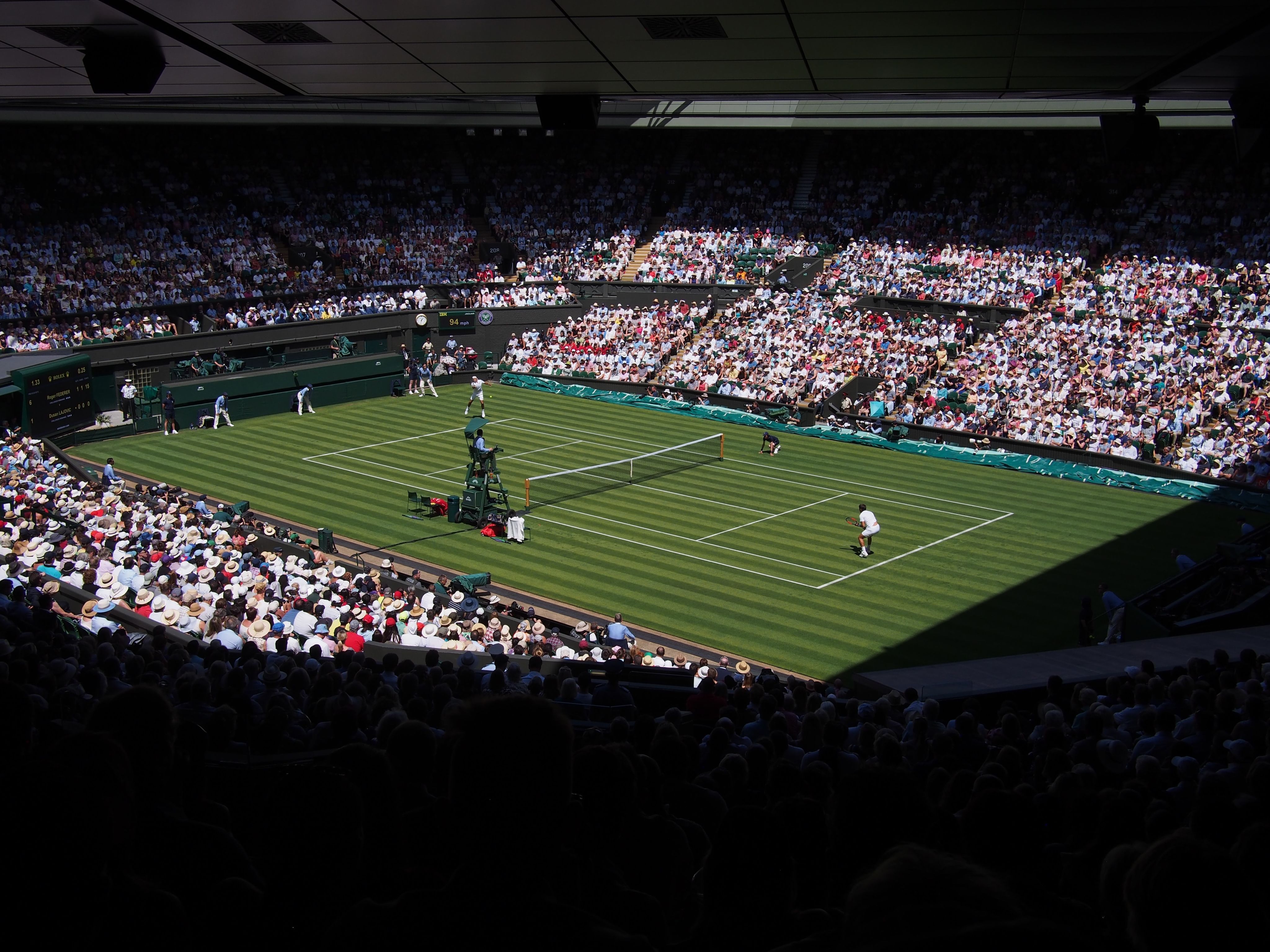
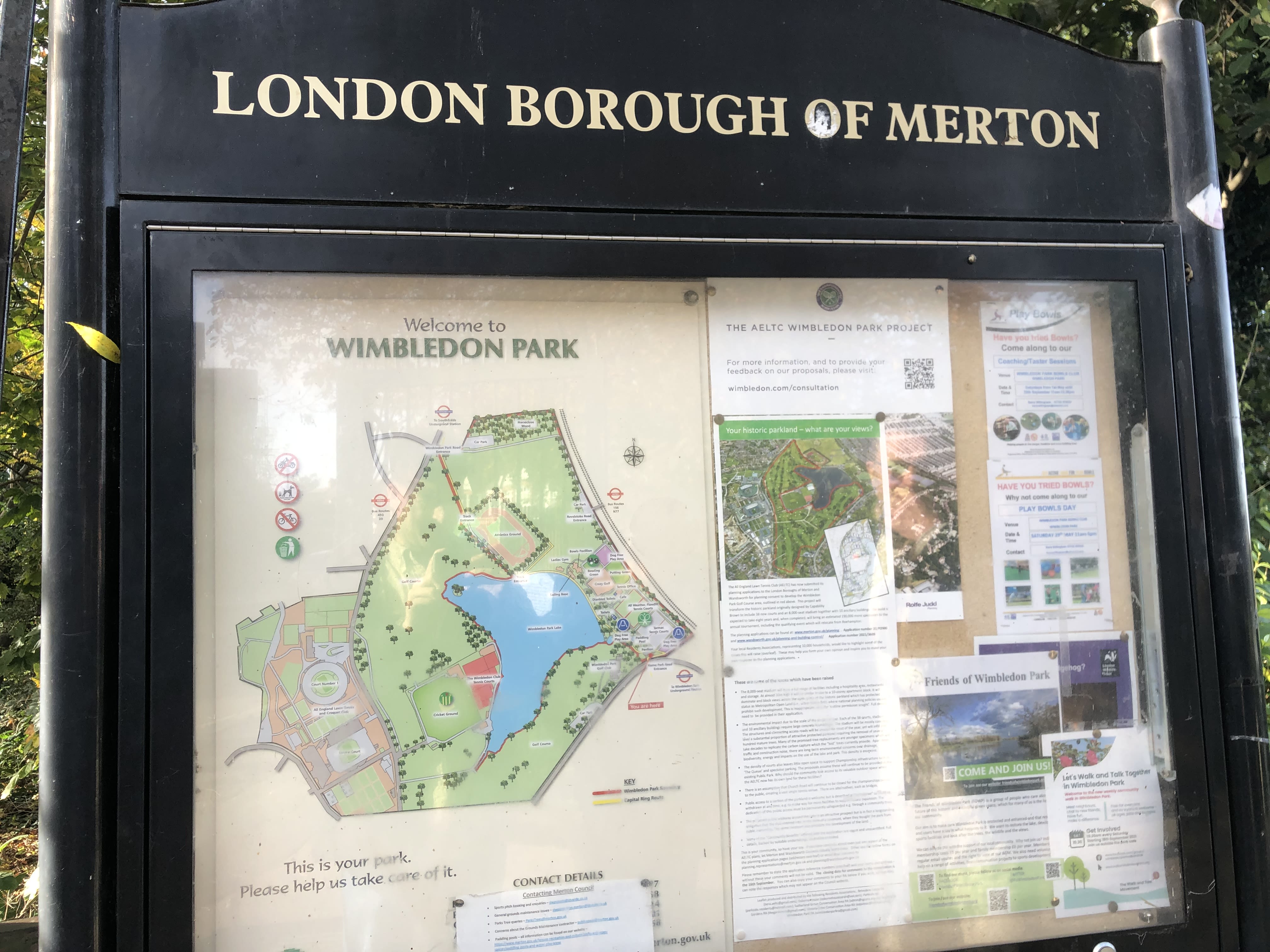
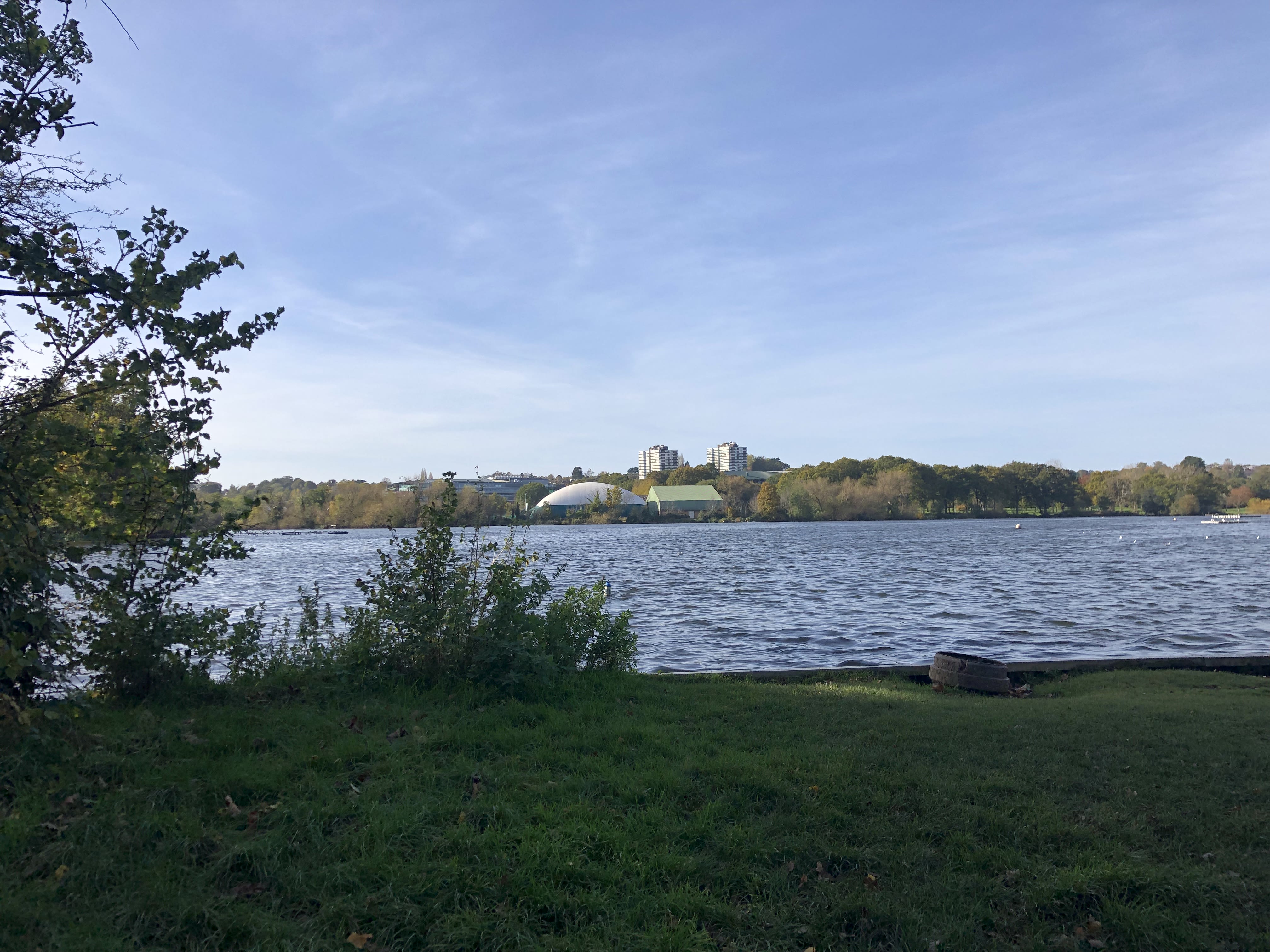
Wimbledon Park lies opposite the current stadium and was created by 18th century designer Capability Brown.
The park falls between two councils, Merton and Wansdworth, with the former owning the public park - a green space Friends of Wimbledon Park chair Dr Nick Steiner says the residents relied on more than ever during the Covid-19 lockdown.
However, within the park is the Wimbledon Park Golf Course, which the AELTC bought off Merton Council in 1993.
Justin Smith has been with the AELTC for eight years. Discussing the original reason for purchase he said: “The eye was to the future expansion of tennis so it was very obvious to have that piece of land. Exactly the purpose of it? I don't think anyone knew.”
Labour Assembly Member Leonie Cooper, who represents both Merton and Wandsworth, said:“It’s clear that local people remain concerned about the All England Tennis Club’s plans and I believe they need to do more to consult and explain them.”
The AELTC have submitted their plans to both Merton and Wandsworth councils and await to hear the outcome.
A Wandsworth council spokesperson said: “As the application site straddles the borough boundary with parts of it in both Wandsworth and Merton, identical planning applications have been submitted to both boroughs.
“We will take on board all the comments we receive from members of the public as part of the statutory consultation process when our planning committee meets to consider its decision.”
As of now, Wandsworth Council has received 532 objections with 16 comments of support, while Merton has seen 706 objections and 19 supporting comments, reaching a total of 1,230 objections all together.
The Gardens Residents Association is one group objecting to these plans and member Stuart Mathieson claims there has been "desecration, dirt and disruption" for a long time.
“All this desecration, dirt and disruption; for years, without any demonstration of need.”
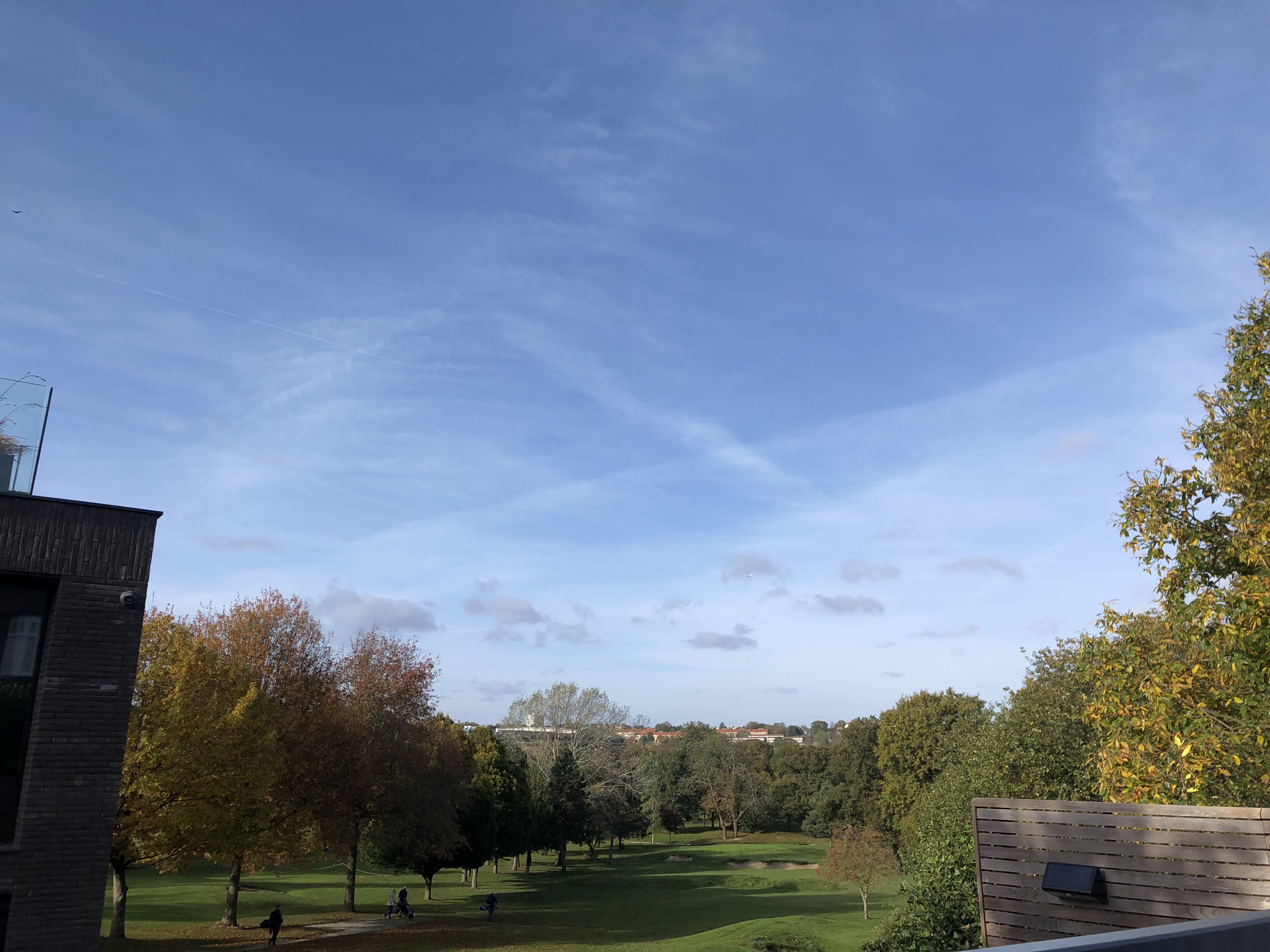
The map below outlines the whole of Wimbledon Park, which incorporates the public park and the AELTC owned golf course.
The map above shows Church Road which links Wimbledon Village to Southfields - a vital thoroughfare for SW19 residents.
The photos illustrate what the AELTC intend the finished project to look like.

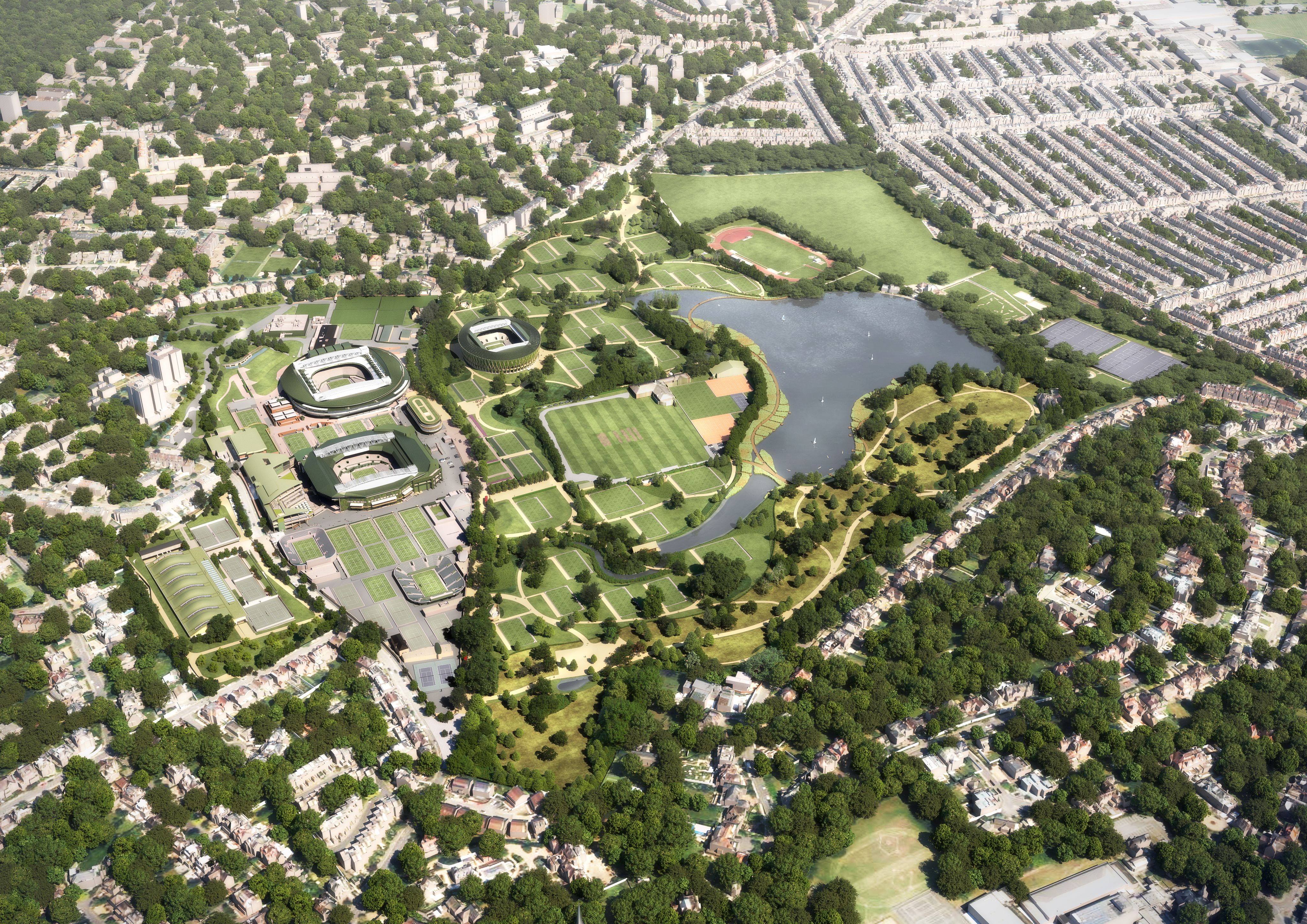
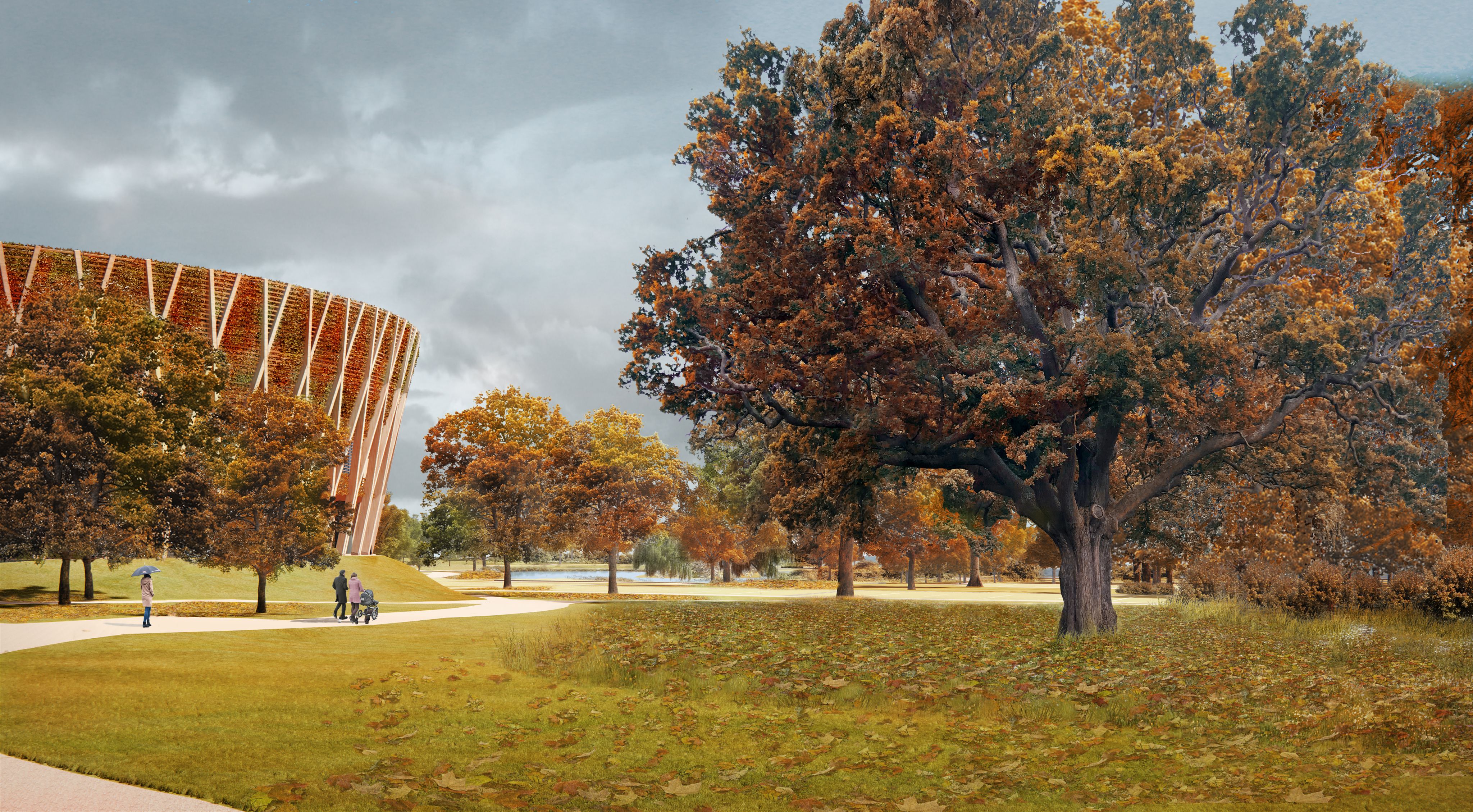
Image credits: AELTC
So what are they unhappy about?
Gardens Residents Association protest outside Southfields station
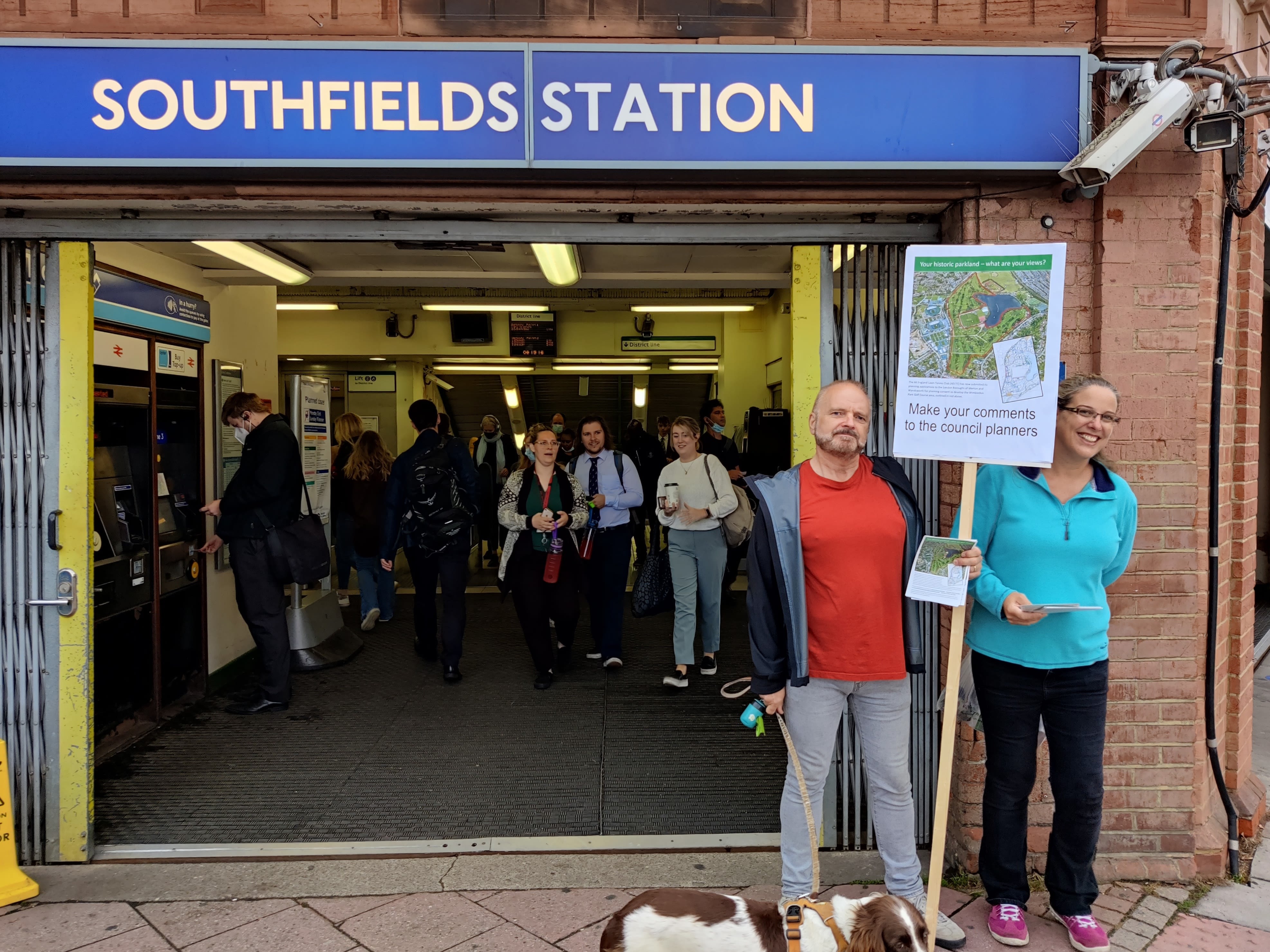
Covenant and consultation
When Merton Council sold the land to the AELTC, promises were made to protect the area for the future.
Christopher Coombe, a member of Wimbledon Park Residents Association, explains: “Merton sold the golf course to the All England in 1993 in the teeth of considerable local opposition...”
“The All England Club promised the same, in a binding covenant with Merton. Merton must enforce it, unless both parties think promises are not worth the paper they are written on.”
However, a spokesperson for Merton Council said: “A legal covenant is not a material planning consideration in a planning application assessment.”
AELTC developer Smith said he could not go into great detail about the covenant because it is not part of the application.
He said: “Other permissions, ownership, anything like that [the covenant] is not part of the planning application process.
“We've got a red line that says these are our aspirations, this is what we would like to do but parts of that will need other types of agreements and arrangements in place.”
The show court or ‘stadium’ - as some protesters describe it - is the primary concern along with a considerable amount of courts being dotted around the site.
SW19 protesters believe that there has been a lack of communication between residents and the AELTC.
Susan Cusack, member of the Umbrella Group representing several Wimbledon residents' associations, said: “The AELTC said that they have consulted with the local residents. What we have had are briefings.
“We had a first briefing back in March which said that they were going to build 20 courts. Everybody was happy with that because that was bringing the qualifiers home which is what they said they were going to do.”
“What we have had are briefings.”
Justin Smith refuted these claims, explaining that the initial plan was always 38 courts.
He also mentioned that he has spoken to "hundreds and hundreds of people" while residents have been invited to on-site exhibitions and walks round the golf course.
He said: “Those who are really excited tend to be a bit quieter. Those who are more concerned about things tend to be a little bit noisier.”
Cusack said the people were left "disappointed" though.
She claims: “After all those consultations, the planning application that went in, it did not change.
"They didn't reduce the number of courts or the size of the stadium. The people were left rather disappointed.”
Pippa Maslin, Green Party member, said:“I urge the AELTC to rethink their plans - to show much greater sensitivity to the heritage and residents of the area.”
“Those who are more concerned about things tend to be a little bit noisier.”
Background image credits: Unsplash
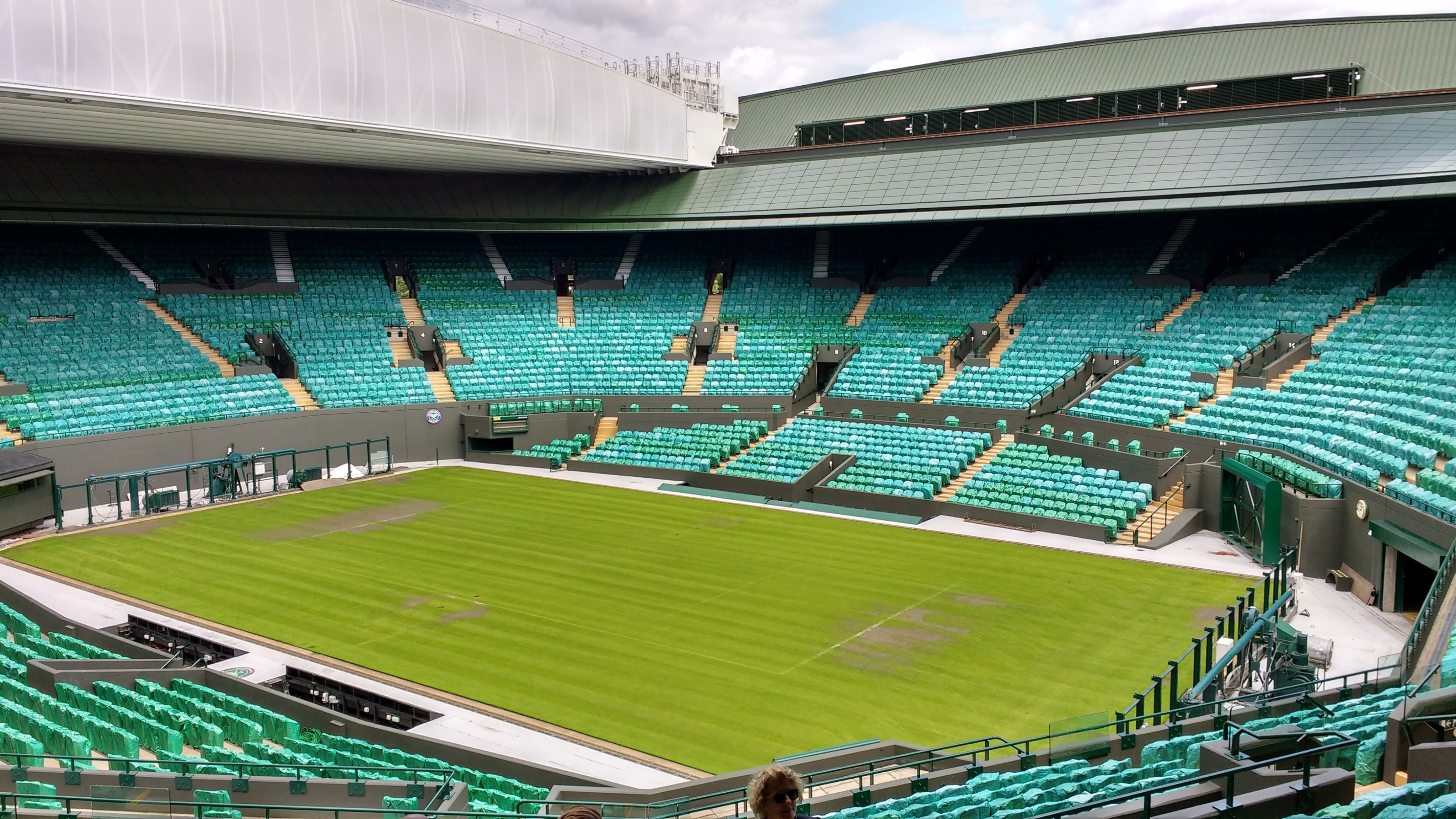

Protecting their environment

If this project was being discussed 25 years ago, the environmental impact of a development may well have been just a minute detail.
In 2021, it takes centre court.
The Merton Green Party objected to the plans and raised concerns about carbon emissions during the development phase and the reduction in carbon capturing trees and green spaces.
Pippa Maslin said: “In 2019, I started the petition that resulted in Merton Council declaring a climate emergency and agreeing upon net zero pledges for the Council and the borough.
“I worry deeply that many aspects of the AELTC proposal run contrary to the council's declaration and pledge to Merton, but that the Wimbledon Championships is such a powerful body that the Council will roll over and let them have their way.”
A grass tennis court complex might not sound that harmful when first thought of but hiding away beneath the surface lies concrete foundations.
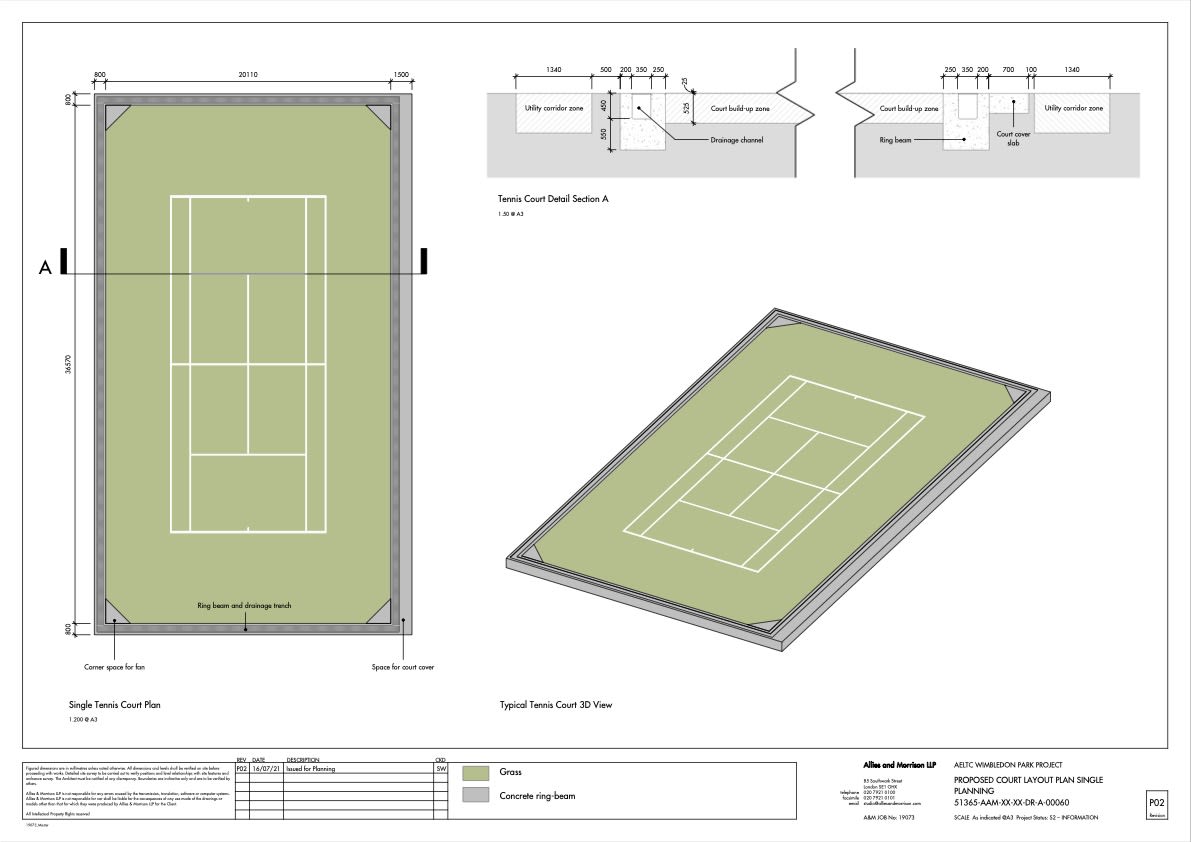
Credit: Allies & Morrison, AELTC planning permission
Credit: Allies & Morrison, AELTC planning permission
Stuart Mathieson said: “Thousands of tonnes of concrete poured over historic parkland. It's not so green after all is it?”
Residents' claim they have worked out from AELTC figures that 7,000 tonnes of concrete will be needed to develop the courts.
Smith acknowledged the size of the project but suggested there would be off-site construction in Lincolnshire to help limit noise, waste and disruption in Wimbledon.
He described how each court has concrete ring beams which act as heavy weights to protect the courts from rain.
He said: “We can't pretend there isn't 38 ring beams. But in terms of the overall area of grassland, it's really quite tiny.”
London has fallen victim to constant development and the London Mayor has identified the deficiency of green spaces as a key issue as they are put at risk each day.
Despite this, roughly 47% of London is "green", according to Greenspace Information for Greater London CIC, 2019 mainly thanks to its Metropolitan Open Land (MOL) and green belt regulations.
MOL is London-specific and is essentially urban green belt. It accounts for almost 10% of Greater London.
The graph below illustrates the amount of MOL or urban green belt that makes up each of the outer boroughs of London, with Merton in the bottom half.
SW19 residents cannot grasp why Wimbledon Park Golf Course is being developed, considering it holds MOL status.
Cusack said: “Building on MOL has implications for the whole country because it is urban green belt - it's extremely important to all of us.”
Mehmood Naqshbandi, also a member of Merton Green Party said: “We reminded the council that it had declared a climate emergency.
“Metropolitan Open Land should only be built on for exceptional reasons.”
Smith explained that MOL status does not mean the land cannot be developed but you have to prove "very special circumstances" and the club feel they are giving back to the area and the community.
He said: “Our proposal here is to maintain the green space that otherwise might be at risk.”
He agreed that this could risk many MOL spaces being taken if developers can get round them but explained that the AELTC are going to be there for a long-time and look after the space.
They want to make the currently private section of the park publicly accessible all year and restore it back to its natural self.
He said: “The only thing that really sits outside of the MOL [regulations] is a stadium, but it's not a massive stadium so it's not really encroaching.”
Merton Council insist the projects impact on the evironment would be taken into account. A spokesperson said: “The assessment of impacts of the proposal would be covered in any Planning Officers Report.”
Smith also added that the AELTC have their own targets, including being carbon zero by 2030 and see over a 10% rise in biodiversity.
“The Wimbledon Championships is such a powerful body that the Council will roll over and let them have their way.”
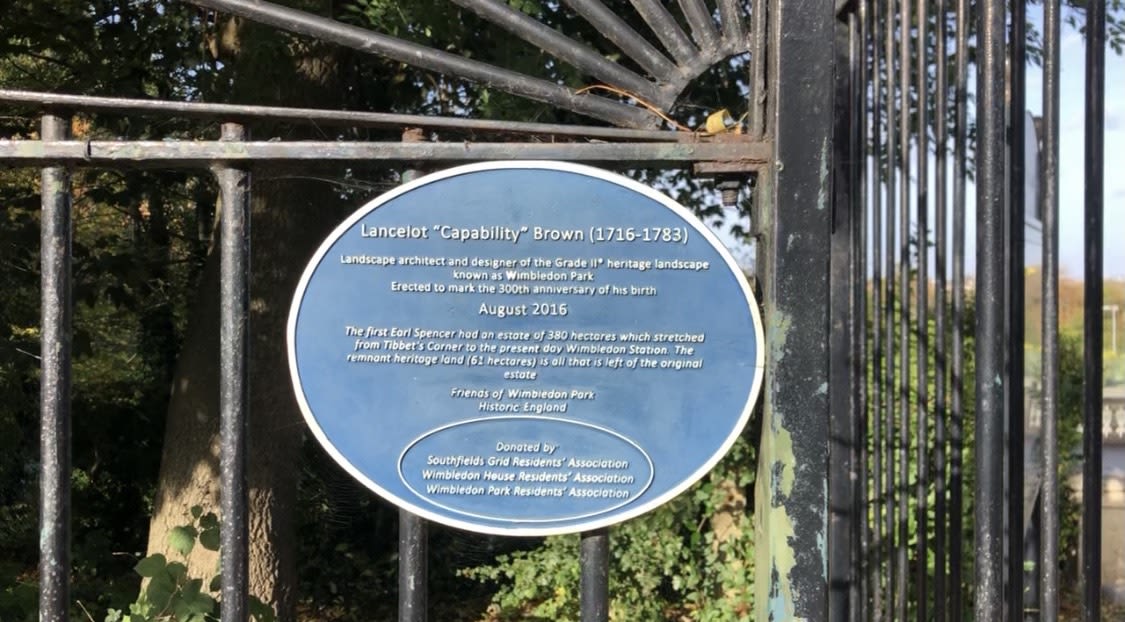
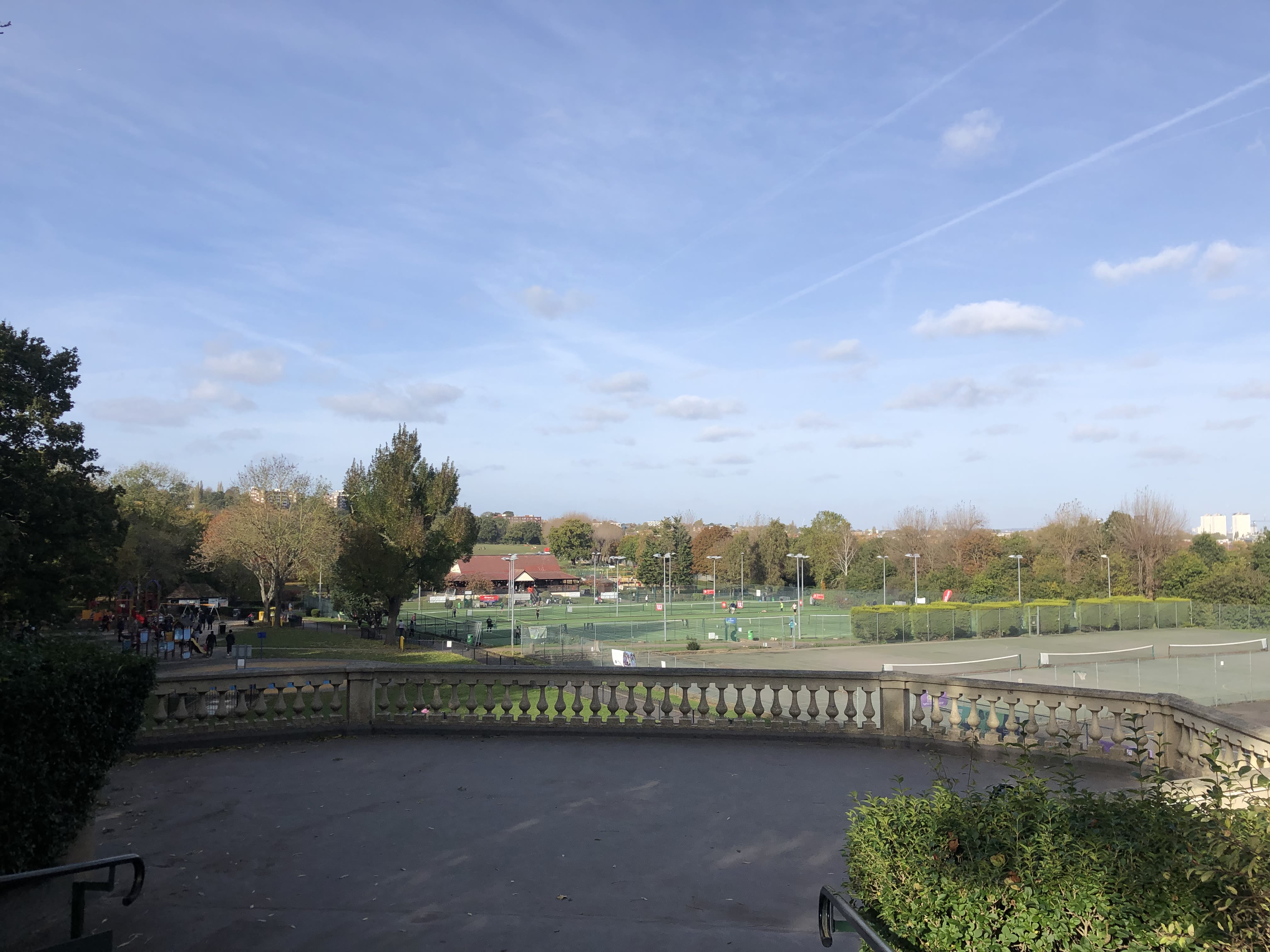
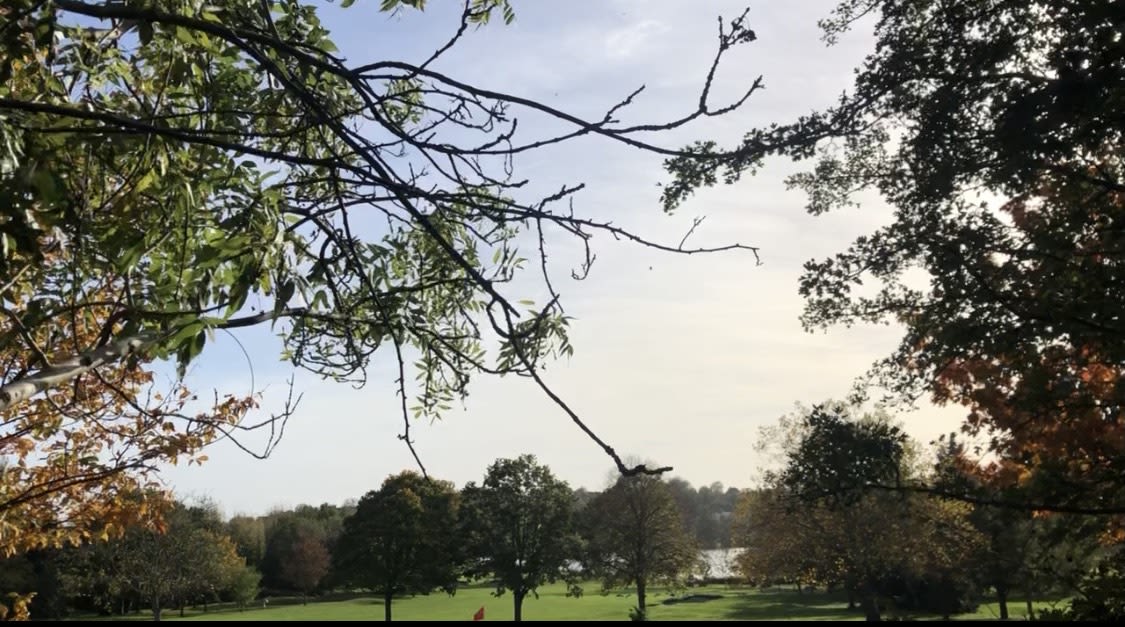
SW19 has seen several societies set up as a way of protecting the future of Wimbledon Park.
Dr Nick Steiner said: “It’s quite clear that the work they are proposing to do will change the nature of the golf course dramatically. It is accepted that this will cause harm.
“If you considered a holistic approach to Heritage Wimbledon Park so you could involve everybody in the discussions, that would have been a much better approach.
“Instead, what they have done is just looked at the land they own and put tennis courts in, there is very little thought about other things.”
Residents Associations have been handing out these leaflets (below) to encourage people to join them in objecting.
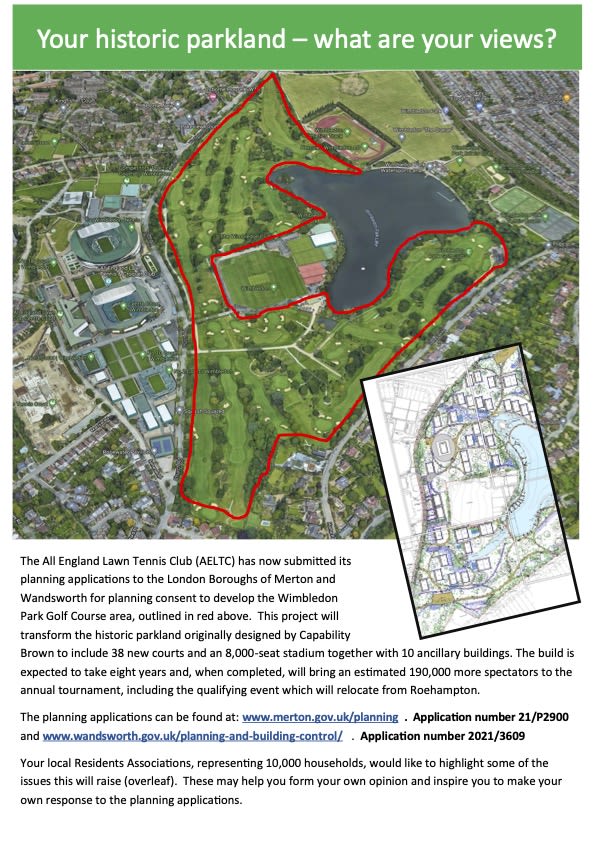
Credit: Susan Cusack
Credit: Susan Cusack
“It’s quite clear that the work they are proposing to do will change the nature of the golf course dramatically.”
All England Lawn Tennis Club (AELTC) Expansion
— TheWimbledonSociety (@WimSoc) November 17, 2021
The Society is very concerned about the AELTC plans to build on Metropolitan Open Land #trees #environment #concrete https://t.co/to519UO3zb

@UCantBSeriuSW19 is a recently set up Twitter account, taking inspiration from three-time Wimbledon champion John McEnroe's iconic phrase 'You cannot be serious'.
Our concerns re the AELTC plans for a show court/38 new grass courts on the Heritage Wimbledon Park site were highlighted recently in a ‘My London’ article. Nick Steiner, our Chair, and Dave Dawson, our environmental adviser, are quoted. Please see link https://t.co/w2cL7ewQuu
— FriendsoWP (@FoWimbledonPark) October 29, 2021
Closure of Church Road

The AELTC is situated on Church Road - a road that plays a vital role in connecting Wimbledon village to Southfields.
Residents feel that closing this road for nearly a month of the year will not only disrupt their lives but result in vast amounts of traffic being built up through areas where drivers will have to divert to.
Eileen Joyce, a Southfields resident, said: “It will close a main thoroughfare and divert a bus route for three weeks each year so that the wealthy elite can use the road free from the inconvenience of local people going about their daily lives.
“It beggars belief that the AELTC are riding roughshod over the area for profit which will not be returned to the local community.”
However, Smith said that there has been data research into the impact of this.
He said: “The bus itself actually had less delays on it than it does in a normal year, because in a normal year, it goes onto a road that's full of people and cars and taxis trying to drop off the championships, and then gets really slow down.”
Planning permission does not allow Church Road to be closed so the AELTC would need to go through a Traffic Management Order.

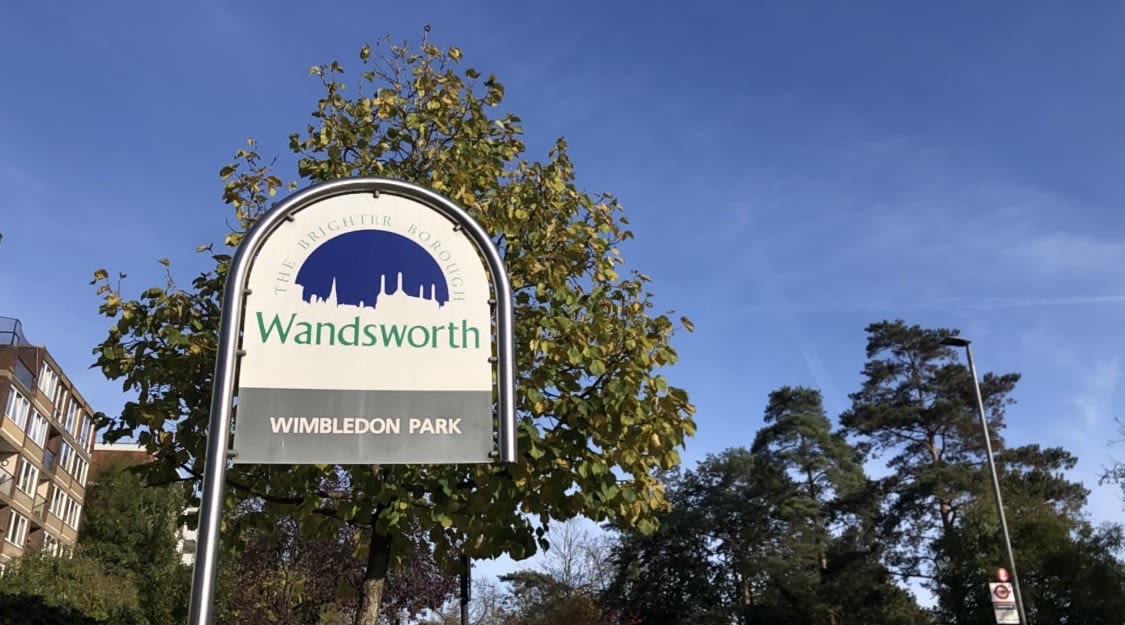
One major fear is that the courts will be untouched for many months of the year.
Cusack said: “If there have to be tennis courts then ensure that they are available for public use when the tournament is not being staged."
Smith, who says the project is aiming to be complete by 2028, said: “Our plan is to have some other smaller events arriving and some invitational [events] and get a little bit more involved with the way we can expand and keep people excited about grass court tennis.”
Cusack and others are concerned how long the project would take.
She said: “They've shown lots of fantastic visuals of what the tennis complex would look like but in fact those pictures won't be reality for 50 to 100 years because that's how long it will take for the trees to grow.”
The AELTC will try to make the environment look as natural as possible by planting trees at different ages. Smith said: “You'll have a cycle of trees growing and maturing and dying.
“It's a planned approach to a very long term benefit.”
A Merton Council spokesperson said: “The AELTCs application is currently under assessment and it will likely be decided by the Planning Committee.
“As yet we don't have a committee date in mind as the application is still under assessment by officers.”
Until that point, those protesting will continue to encourage the community to help them prevent this project going ahead.
Background image credit: AELTC
All images by Arthur Parashar unless otherwise credited

